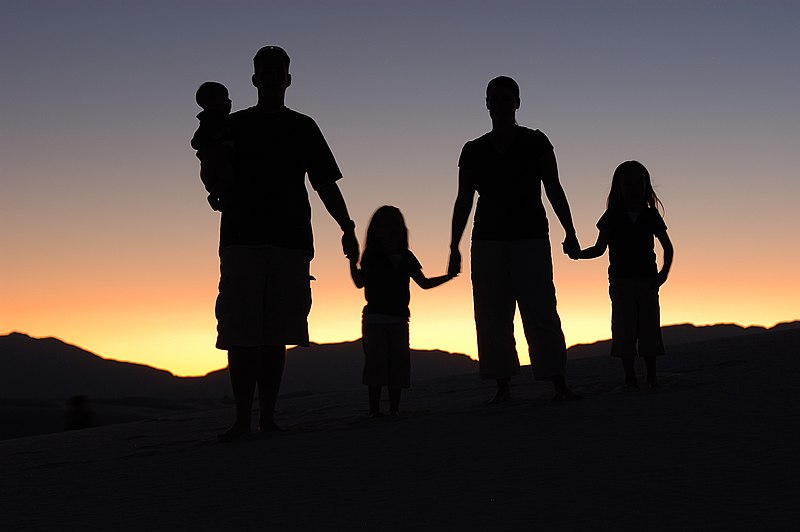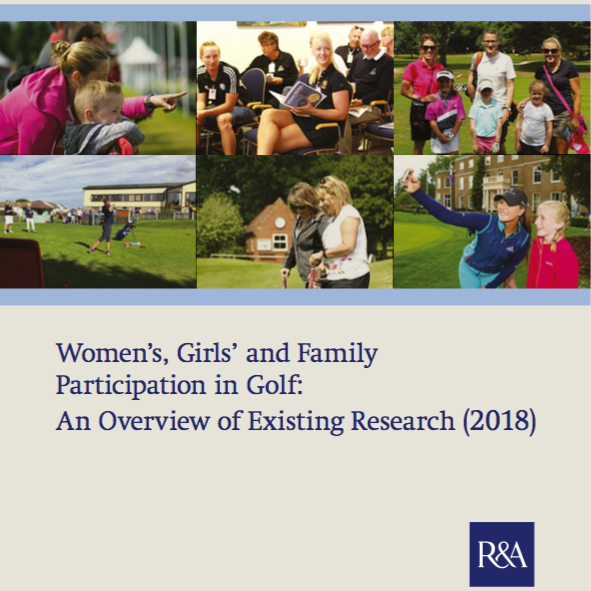This is how you get more women playing golf
In February a major new R&A commissioned study by the International Institute for Golf Education confirmed the huge potential female golfers offer to golf clubs. Here, one of its two authors, Philip Hall, details the results and what clubs can do to tap into this market
Myself (Philip Hall) and Dr John Fry, from the International Institute for Golf Education (Myerscough College), were commissioned by The R&A to conduct research around women’s, girls’ and family golf participation, with one of the main aims of bringing all current academic and industry research around the topic into one document for the industry to use. We wanted to present the findings in a clear and concise way so everyone from a casual golfer to the manager at a golf club could benefit from the report. The report includes key initiatives that are currently being used in the industry to promote more women’s, girls’ and family golf participation. The report also aimed to try to create a definition for family golf, as this is an area of the industry that could help to increase female and girls’ participation.

The presenting problem
After collecting some initial data, it was clear to us that there was a growing problem in golf within the UK and wider Europe; participation globally had dropped by 2.4 per cent since 2012 and in the UK alone participation had dropped by 4.3 per cent. This pattern, in the short term at least, looks set to continue. However, despite the current gloomy outlook, research by Syngenta (2016) identified that one of the largest opportunities was latent female golfers. They claim this section of the industry alone is potentially worth around $35 billion.
A quote I heard from a LinkedIn connection spoke volumes to me at the start of the report. During a post about getting more younger golfers into the sport, they claimed golf clubs are run ‘by a bunch of 60 year olds, which are telling a bunch of 40 year olds, how to attract a bunch of 20 year olds’. I took a moment to think about my local golf club to see how accurate this statement was; it turns out very. The people who run golf clubs and form the decision-making committee tend to be the older members, who are male. How can these individuals possibly make decisions that can positively affect young golfers or female golfers if they aren’t aware of what these groups want from golf? Very few golf clubs send out surveys to find out what members want and instead rely on them attending the AGM and having the courage to speak out for change. I very highly doubt a junior golfer would be taken seriously at these meetings even if their idea could help to attract and retain more junior golfers. Instead, golf clubs continue to create committees that are increasingly out of touch with the groups they wish to attract.
During the research, we questioned various individuals from countless national governing bodies (NGB) across Europe, and most sang the same tune that golfing bodies, golf club boards and professionals should be more equal. There is reams of research that claim when there is just one female board member, meetings tend to be more productive and often come to conclusions that benefit both males and females.

One fantastic incentive that myself and John discovered was the Swedish Golf Federations Vision 50/50 plan. They aim to increase the number of females in decision-making roles, so that it is evenly split, and wish to increase the number of female golfers by 10,000 by 2020. Currently 17 per cent of Swedish golf clubs have a female club manager, 10 per cent of chair people are female, and nine per cent of PGA professionals are female, and this is set to grow through this programme. The promotion of gender equality in golf is a must for the industry to fully benefit from female golfers.
The role of the family
While exploring academic and industry research, a common theme was discovered, which was the role the family plays in sports’, especially golf, participation. Parents tend to pay for children’s sporting activities, taxi their children to and from facilities, and family sporting cultures tend to guide children down a particular sporting path. Golf needs to be able to sell itself to parents so they are more likely to encourage their children to play. During the research, one person who we interviewed said they had heard stories of parents going to golf clubs to try and get information on membership for their kids but being met with an unwelcoming environment. Codes to get into the building, the pro in the shop passing them onto bar staff who then say the secretary isn’t in, and not having any information or documents to give the parents. This creates a negative image for golf clubs and parents are likely to encourage their kids down an alternative sporting path.

Kitching (2018) discovered that nine out of 10 golfers he questioned played golf because another family member plays. Other research found that 65 per cent of female golfers play because they have a friend, parent or partner that plays, which further shows that the family unit is crucial to golf. Despite this, very few golf clubs have family membership offers and further most golf clubs have family membership options that are aimed at the traditional nuclear family (mum, dad and two children). Volumes of research has showed that there is a change in the traditional families, and golf clubs need to recognise this. One way golf clubs can do this is by offering more flexible memberships, sitting potential members down and asking what they wish to get from their membership, and giving them options that meet as many needs as possible. Whether this being they want membership for themselves and their children, paying a set amount of days per week or paying in monthly instalments to bring the cost down. Flexibility is important for golf clubs to grow membership and more importantly retain members. England Golf put an emphasis on creating a welcoming golf club atmosphere and flexibility in their approaches to growing membership, which is great!
Other key findings
The report found various other key finding that golf clubs could learn from, some of which include barriers that many in the industry believe are only perceived. These include two of the main barriers to golf, which are time and cost. The majority of golf clubs are set up so players can pick and choose how many holes they wish to play. Increasingly, clubs are running nine-hole competitions and with the introduction of Speedgolf and GolfSixes, there are more and more quicker formats of golf available to players.

With more flexible memberships, the cost of golf is dropping. Currently, a membership scheme called PlayMore Golf is offering flexible membership at a low price, which more golf clubs should consider offering.
Alternatives to golf, such as footgolf, were also found to be beneficial for the sport. This format of golf tends to attract a younger demographic to a golfing facility, which previously they may not have visited. The theory is they are on site and see the driving range, give it a go and then move onto golf. More research as well as industry initiatives should explore how this progression path can become more efficient.
Conclusions
Arguably, there were various take home messages for golf clubs from this report. Some that stood out to me is that clubs needed to be more flexible, welcoming and also increase the perceived value of the membership to their members. One crucial message for golf clubs is that of being proactive rather than reactive. From past experience and stories, golf clubs tend to wait until there is a problem, for example a large drop in membership subs, until they try to create an idea to tackle this. An area I am currently exploring, that could easily address this, is that of a members’ survey. This gives members the chance to offer ideas and provides critical information to the golf club on what threats and opportunities they have. This simple method could help golf clubs to understand more about what members want before they leave.
One of the take home messages we found for The R&A was the desire for NGBs to work with The R&A to develop programmes to grow golf, so that they all can have a shared goal and a shared pathway to achieve this goal. Many variations of the same initiatives exist, and it can be difficult for a community to be created through this. If social media hashtags vary between incentives, it can be difficult for the target group to see just how much of an impact these schemes are having. Heads of various governing bodies asked The R&A to help create, market and deliver these programmes going forward.

Ultimately, what came from this report was a large number of opportunities for golf, as a sport, to grow. Latent female golfers could prove to be a huge asset to the sport, families could increase participation ten-fold, and if golf clubs can create a welcoming and flexible environment, the numbers of golfers will inevitably increase.

Philip Hall
The report Women’s, Girls’ and Family Participation in Golf: An Overview of Existing Research (2018) is available to download for free from The R&A website. If you’d like to discuss the report with Philip Hall, who can assist golf clubs on this issue, please email philiphallco@hotmail.com















Clubs would greatly benefit from having a place to watch over small children, while parents play. Too often, the mother has to stay home watching the children, or if she cannot do this, the father is forced to watch them, or use a childcare facility far from the golf course.
Another survey. There will be another one along in a minute, paid for out of the amateur players golf union tax.
& the answer to ensuring more participation by women in the game is staring us in the face. I quote from Feb 2017 “For example, one of the biggest stumbling blocks for women is inadequate signage on the course and the fear of losing their way. This is of a straightforward provision but it is surprisingly overlooked by the majority of clubs.”
There you have it. More signs on the course . “Problem” solved
This is an important article which should be given more prominence on your homepage. Already the article is relegated to the lower half of the page & its only a week old.
Surveys of existing members will achieve little or nothing. If there was appetitie for change amongst the existing members they would probably have done something about it by now.
Clubs are predominantly run by men, with their own interests in mind. They are not necessarily interested in change/ expanding the ladies/girls membership.
In my experience lack of equality is a fundamental problem. Modern women are not interested in being second class members in stuffy golf Clubs. There is so much else available these days.
Clubs need to wake up & embrace change if they really want to attract women/girl members.
Excellent article however the first thing that needs to happen is equality within the R & A (itself an international governing body)especially with regards to governance. Equality within other golfing bodies, golf club boards and professionals, etc as recommended in the report would surely follow. NGBs need to work WITH the R & A who have abundant resources. Linking a well funded (by the R & A) programme between the R & A and the NGBs with KPIs attached is essential. The R & A needs to commit funds from its plentiful resources to grass roots women’s, girls’ and family golf participation and not take funds from women as was the case with the LGU merger at the beginning of 2017 when the R & A pocketed £2.50 that year from every women who was a member of an affiliated golf club in GB and I even after the merger.
No more surveys needed. Get your own house in shape and commit actual funds linked to KPIs in conjunction with selected NGBs to stop golf amongst women, girls and families in GB and I going into terminal decline.
Fortunately my golf club has a healthy and strong membership but I do know they would like to increase the numbers in the ladies section. They currently have their own day where they have tee closure for 3 hours for their competitions midweek which is good. They also have representation on the greens committee snd other committees so they can have their input into Course changes and set up. For Juniors I think if a parent is a member then cost should be nominal or free if they play at times when the course is naturally quiet. The club could also give free group lessons to youngsters but most important of all have a mentor there for them to help in all aspects and not fall foul of those 60 year olds
Very good article. Would be great to see a visionary club populate the committee not with the existing demographic but a future vision of its demographic and then see how decision making changes.